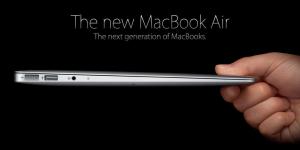August 17, 2014
I’ve been working with personal computers for over 35 years, so I’ve endured seven types of long-term computer data recording and storage:
- cassette tapes
- floppy disks
- hard drives
- ZIP drives
- tape drives
- optical discs
- solid state
Each had its pros and cons, and this post was prompted by my plan for another transition in primary storage: switching my five-year-old desktop computer from hard drives to a solid state drive. But first let’s revisit past transitions.
Cassette tape to floppy disk
My first computer was from Radio Shack: a 1980 TRS-80 Color Computer with 32 kB of RAM. It used a cassette tape to store and retrieve programs. At 1500 baud, the data transfer rate was about 4 million times slower than the transfer rate of the new solid state drive I’m planning to install in my current desktop computer. So it took a long time to record or load even the tiny programs of that era, and sometimes a cassette load would fail, meaning I had to fiddle with the volume on the tape player and try again.
The same technology was available for my 1983 Tandy Color Computer 2, but I convinced my parents to invest in a series of 5.25″ floppy disk drives to improve data capacity and transfer rate. The first drive was made by Radio Shack and the single-sided floppy would hold about 140 kB of data after formatting, which is about 7 million times less storage than my new solid state drive. I learned I could save money by cutting a notch in a floppy disk’s outer jacket and flipping it over to use the other side in the drive. Later I upgraded to a couple of double-sided drives for almost a half-megabyte of readily accessible storage.
Floppy disk to hard disk
The first time I remember using a hard disk drive was in the summer of 1985. I was working at the Oklahoma Department of Tourism at the state capitol as a minimum-wage office assistant. At one point I was plunked down in front of an old dedicated Wang word processor terminal. Next to me was a noisy 10-megabyte hard drive about the size of an apartment-size washing machine. But that was a government office, so the technology in use was already obsolete. Hard drives were making their way into personal computers, and I would add a couple of them to my next personal computer.
My 1985 Tandy Model 2000 started out with two 720 kB floppy disk drives, but later I spent $1,700 to add an internal 10-megabyte hard drive to it. Compare that cost of $170 per megabyte, in 1980s dollars, to the 0.043 cents per megabyte I paid for my new solid state storage, or better yet the 0.0057 cents per megabyte I paid for my latest 2 TB portable hard drive.
That was the beginning of an uncounted chain of hard drives I have owned, in capacities leaping from that initial 10 megabytes up to 2 terabytes, a 200,000-fold increase in capacity. Data transfer rates improved over time, with the 1-terabyte hard drives in my latest desktop computer, spinning at 7200 rev/min, reaching as high as 142 MB/s. But the solid state drive I plan to install should at least triple that transfer rate.
Backups of all sorts
Hard drives are great, but their inevitable mechanical failures mean you have to make regular backup copies of the data. The floppy drive was the basis for my portable storage and backup for years, first with 5.25″ floppy disks ranging from 140 kB to 1.2 MB of capacity. Hard drive backups on those floppies were a real pain, with me having to repeatedly swap dozens of 5.25″ disks to make a backup. Eventually hard-shell 3.5″ floppy disks took over, but their typical capacity was only 1.44 MB.
The nightmare of disk swapping led me to the ZIP 100 drive, a specialized floppy disk system which could hold an amazing 100 MB of data. I later upgraded to a 250 MB ZIP drive system. But hard drive capacities were rising so fast that it still took a lot of swapping of expensive ZIP disks to back up my computer.
So I went back to the beginning: using magnetic tape for storage. Tape backup cartridges had immense capacity and were much faster than my pitiful old cassettes from the early 1980s, with gigabytes of storage possible on specialized units like the Ditto Easy 3200. I could pop in a tape and let it run unattended during a long backup. But tape backup was noisy and sequential. It took a long time to recover just a file or two from a tape backup, and I always worried about a faulty backup recording or broken tape.
For awhile I used recordable optical CD and DVD disks to backup some data, but they were slow, and my recordable DVDs topped out at 4.7 GB. With my hard drives reaching tens of gigabytes by the 2000s, I needed something easier and faster.
So I switched to the kind of backups I’ve been doing for over a decade: backing up my primary fixed hard drives with portable hard drives. I still have my first portable hard drive, a 30 GB Backpack unit. Later I used 80 GB, then 120 GB, and finally 1 and 2 TB portable drives for backups.
And for years I relied upon dual hard drives in my desktop machines in a RAID 1 configuration where one drive was constantly mirroring the other. That way when one failed, the other could take over without a hiccup. Well, that was the theory. While my RAID 1 drives did indeed prevent any data loss when one failed, sometimes it took a lot of work and head-scratching to recover from a drive failure. RAID 1 is not very popular in personal computing, and it is now rather difficult to buy a computer outfitted for it, and the tools for doing it yourself are somewhat arcane.
Nowadays I use Dropbox to keep my most useful data readily accessible and synchronized on my various work and home desktop computers, laptops, tablet, and smartphone. But I don’t want to pay for a terabyte of more of online storage; my 100 GB Dropbox account has about 65 GB of data in it, which is less than one-tenth of the data on my primary hard drive. So I still have to manually backup a lot of data if I don’t want to risk losing it.
Compression
As hard drive capacity increased over time, so did my data storage demands. In one generation of hard drive after another I would begin bumping up against a drive’s capacity. I would try to prune obsolete files and then have to use the Windows Disk Cleanup buried at Accessories > System Tools to regain space, sometimes even uninstalling unused Windows components to regain space. For awhile Windows had built-in data compression software, and that let me stretch the use of my 1993 desktop system all the way to the year 2000. In my next system I avoided using the disk compression, instead adding a second hard drive when I needed more room. But it was a pain to keep some data on a separate D: drive from my boot C: drive.
My Desktop Computers’ Maximum Hard Drive Space
| CPU Year | Max. Capacity (GB) |
|---|---|
| 1985 | 0.01 |
| 1990 | 0.14 |
| 1993 | 1.6 |
| 2000 | 85 |
| 2004 | 750 |
| 2009 | 1000 |
My last big leap in main drive capacity was the terabyte system in 2009, with two mirrored RAID 1 drives. Since then both of those hard drives have failed and been replaced, but it was proved difficult to get them reconfigured for RAID 1 mirroring. So now I have a 1-terabyte C: drive, a 1-terabyte D: drive I use as an in-the-case occasional backup, and several 1 or 2-terabyte portable drives I use for offsite long-term backups.
By mid-August 2014 the one-terabyte C: drive had about 275 GB of documents, 225 GB of digital photographs, 185 GB of music, and 200 GB of miscellaneous files and applications. That data horde is what remained after occasionally offloading data I didn’t expect to need again onto a 2-terabyte shared network drive which I don’t bother to back up. With formatting overhead, I was down to about 50 GB of free space on my desktop’s one-terabyte drive. 5% free space is not a good place to be. I certainly could prune some more data, since some documents date back to 1988 or earlier, but the big unified categories of data capacity usage were my huge collections of photographs and music. I’m not inclined to discard any of my photos, and my music is already-compressed MP3 and AAC files.
So when I heard about JPEGmini on the Home Theater Geeks podcast this week, I quickly tried out the utility, was suitably impressed, and bought it for $20 to optimize the JPEG compression settings throughout my digital photo collection. That has reduced the total space dedicated to photos from 225 GB to around 130 GB. So I have enough space to keep going with my five-year-old system without bothering with a drive capacity increase.
But what has really irked me is the hard drive speed bottleneck in my desktop system, even with fast 7200 rev/min drives. I have plenty of fast computer cores and lots of RAM, but after 5 years of use my Windows 7 machine takes forever to boot up and frequently bogs down because of Microsoft’s disk indexing services and the like. A lot of cruft builds up in a computer system when you install and use various programs and utilities and lose track of things, but even a clean install of Windows 7 and the applications I currently use would be limited by the data transfer rates of my hard drive. It used to be that adding RAM was the best way to speed up an older system, but now the best thing to do is to switch over to a solid state drive.
Hard disk to solid state
Solid state long-term storage first appeared in the form of USB keys. I’ve used a bunch of them over the years, and have some truly tiny ones with 8 GB of storage. But they were never my primary backup method; I just used them for portable storage. My introduction to the incredible speed and reliability of a solid state drive as the main drive was in my 2010 Apple MacBook Air. It remains my personal portable computer, and I am still surprised by how quickly it boots up and how it remains quite snappy despite its terribly outdated 1.6 GHz Intel Core 2 Duo microprocessor with 4 GB of RAM. That pales in comparison to the Intel i7-920 microprocessor with four 2.66 GHz cores in my five-year-old desktop computer with its 8 GB of RAM, but the MacBook Air seems brisk because of the speed of the solid state drive. And while I have backed it up a few times, I’ve never really worried about its data. Someday the solid state drive will reach its end of life and become unreliable at retaining data, but I’m pretty sure the computer will be so obsolete by then I will have already abandoned it.
Until now, capacity limits and costs prevented me from considering switching my desktop computer over to solid state storage. My MacBook Air’s solid state drive is only 128 GB, and I do not want to hassle with a solid state drive for booting, applications, and often-used data coupled with a separate spinning hard drive for the rest of my data. I want everything on the same drive, and I need a terabyte of storage to pull that off.
On a recent This Week in Tech podcast, guest Allyn Malventano mentioned his reviews of solid state drives and said that prices had fallen and Crucial had a one-terabyte solid state drive that was a good bargain. I verified that report and ordered the drive, along with an adapter kit to fit it into my desktop machine since it is sized for a laptop computer’s form factor.
In the next post I report on buying, installing, configuring, and using that drive in my 2009 desktop computer. As you have seen in this post, it is the latest link in a long chain of data leading back to my childhood. I’m hoping it will extend the use of my 2009 desktop computer for several more years.















Reblogged this on Tech at Peak.